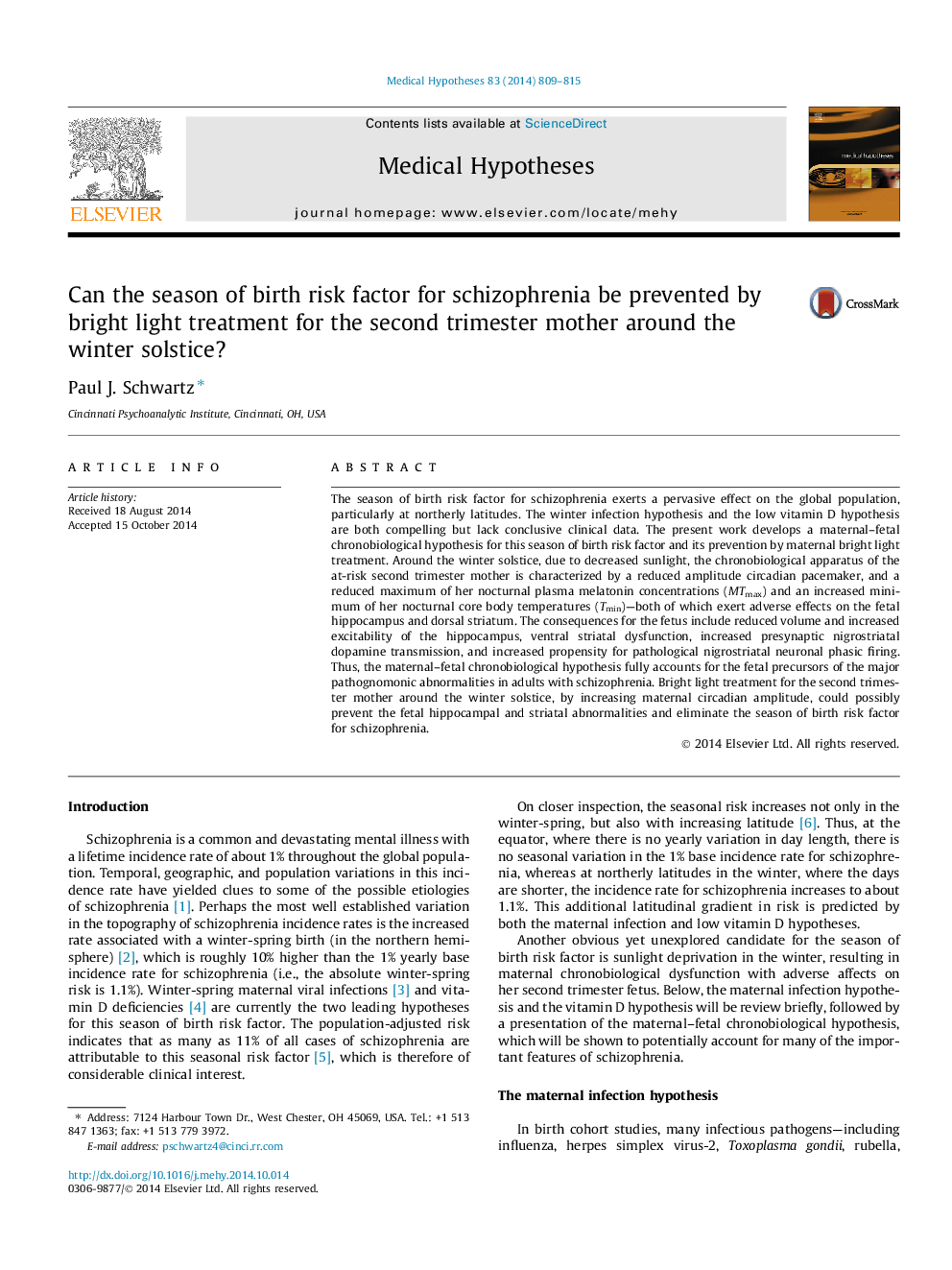| Article ID | Journal | Published Year | Pages | File Type |
|---|---|---|---|---|
| 5811587 | Medical Hypotheses | 2014 | 7 Pages |
The season of birth risk factor for schizophrenia exerts a pervasive effect on the global population, particularly at northerly latitudes. The winter infection hypothesis and the low vitamin D hypothesis are both compelling but lack conclusive clinical data. The present work develops a maternal-fetal chronobiological hypothesis for this season of birth risk factor and its prevention by maternal bright light treatment. Around the winter solstice, due to decreased sunlight, the chronobiological apparatus of the at-risk second trimester mother is characterized by a reduced amplitude circadian pacemaker, and a reduced maximum of her nocturnal plasma melatonin concentrations (MTmax) and an increased minimum of her nocturnal core body temperatures (Tmin)-both of which exert adverse effects on the fetal hippocampus and dorsal striatum. The consequences for the fetus include reduced volume and increased excitability of the hippocampus, ventral striatal dysfunction, increased presynaptic nigrostriatal dopamine transmission, and increased propensity for pathological nigrostriatal neuronal phasic firing. Thus, the maternal-fetal chronobiological hypothesis fully accounts for the fetal precursors of the major pathognomonic abnormalities in adults with schizophrenia. Bright light treatment for the second trimester mother around the winter solstice, by increasing maternal circadian amplitude, could possibly prevent the fetal hippocampal and striatal abnormalities and eliminate the season of birth risk factor for schizophrenia.
